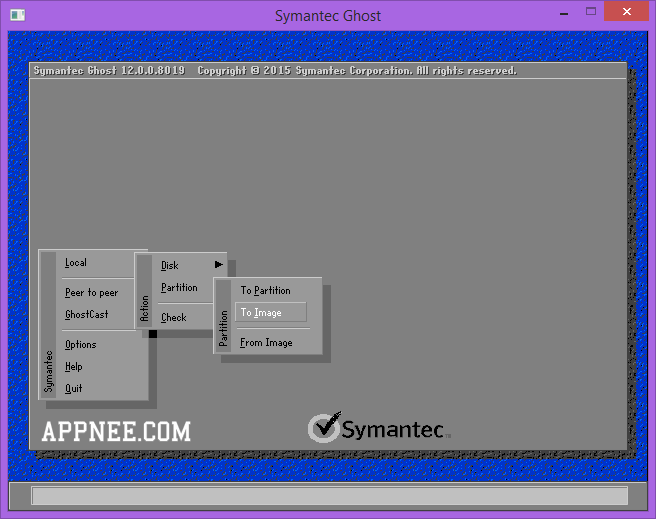Symantec Ghost 32 Free Download
- 9 Comments!

Ghost version 2.x is designed to work with the AMD family of 64 bit processors as well as the Intel EM64T. Versions of Ghost older than 2.0 may work on 64-bit hardware that supports running in 32-bit mode, however, this has not been fully tested and is not supported by Symantec.
• Close all applications including the browser. • Double-click on the saved file to start the installation process. • The installation process starts. Idate installer full version download.
Ghost version 2.x is designed to work with the AMD family of 64 bit processors as well as the Intel EM64T. Versions of Ghost older than 2.0 may work on 64-bit hardware that supports running in 32-bit mode, however, this has not been fully tested and is not supported by Symantec. There are some considerations when cloning servers.
See the document 'Does Symantec Ghost work with Server operating systems?' At References Microsoft Document on 32-bit compatibility with 64-bit systems: Intel Document on the IA-32 Execution Layer: Technical Information AMD's family of 64-bit processors (Athlon 64, Athlon FX, and Opteron) and the Intel EM64T have built-in support for 32-bit environments. Ghost is not designed to work with Intel's Itanium processor as it does not natively support 32-bit environments and requires the IA-32 Execution Layer (EL) which is usually built into 64-bit OS versions.
Sorry I don't have Ghost 10, I have 'Ghost solutions suite 1' so can't really answer too qreatly. However it did work these two ways Booting into Dos and running a script that runs 16bit Ghost.exe Booting into WinPE 2 and running a script that in turn runs Ghost32.exe (with the switch of course) So based on that I'd say that it would (unless they've changed the switch name again) What the fdsp switch does is preserves the signature bytes on the destination disk, originally usefull if Windows blue screens appear after a reimage of Windows 2000/XP Hope that helps. No, we did not use the bcdedit that was shown here in this thread. What we ended up doing was clear the HDD completley and started this way. What we have found is that we were trying to use 3 partitions on our HDD.
It is how they have there systems setup. Once we used one partition and made sure that all the BDD, WAIK, VISTA, etc matched up, we have had great success. We did not have to use the bcdedit and the boot manager went away once everything matched up. The key for us was having the HDD on one partition and everything matching up. I do agree that one partition is easiest, although in my case we use Dells that have an OEM diagnostic partition and a separate Recovery partition. The powers that be here prefer that we at least preserve the diag partition. In your case, did you use your unattend.xml to clear the drive as part of the imaging process or did you do it manually?
I'm considering BDD 2007 as part of our imaging solution, would you recommend it? Did you start out with RIS/WDS initially or did you always use BDD? Also, did you ever have any success in getting PXE from WDS to load an image automatically? You will need to get Symantec Ghost Solution Suite 2.0 for x64 support on the clients. Only limitation from what I've read is if you're going to be using AI to capture application settings or to create deployment packages, it only works with 32-bit apps.
As far as cloning Vista using Ghost32.exe, I've had no issues since before the February CTP of Vista, we've been using Ghost Corporate Edition 8.3 previous to the current version 11. Currently I'm testing deploying (or reverting, which is what our QA department will use it for) using Ghost Solution Suite 2.0, so far the only real hang up is working with sysprep, Vista and the Ghost Console.
Doing image creates and restores work like a charm though. The goal for getting Sysprep working is only to save space, which may still prove impractical as each test bench box will probably have it's own set of configurations and such.but I digress. I'm curious as to whether most of the issue's people have been having with Ghost and Vista have only been with the 'Home' version of Ghost. Previous version of Ghost could restore early builds of Vista but not the later ones.

The first major problem came when Vista didn’t like Ghost clearing the disk signature. Many users overcome this by using the switch –fdsp (Force Disk Signature Preserve) with Ghost. The second was when partition alignments in Vista changed from track boundary to MB boundary. In most of the disks, first partition used to start from track one (offset sector 63) and Vista starts it from 1MB (usually 2048) sectors. This is the reason for previous versions of Ghost to work with some machines but not with the others.